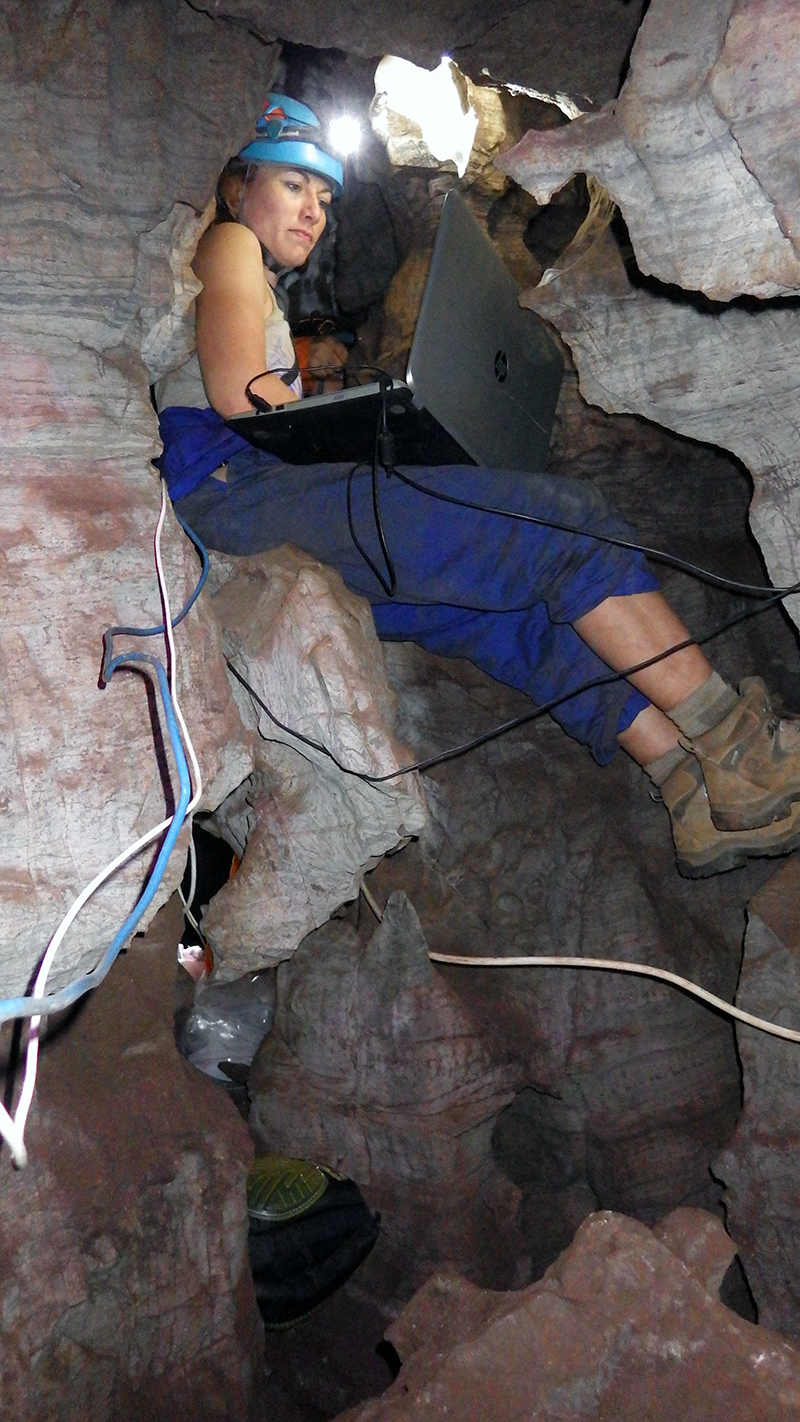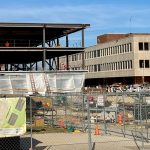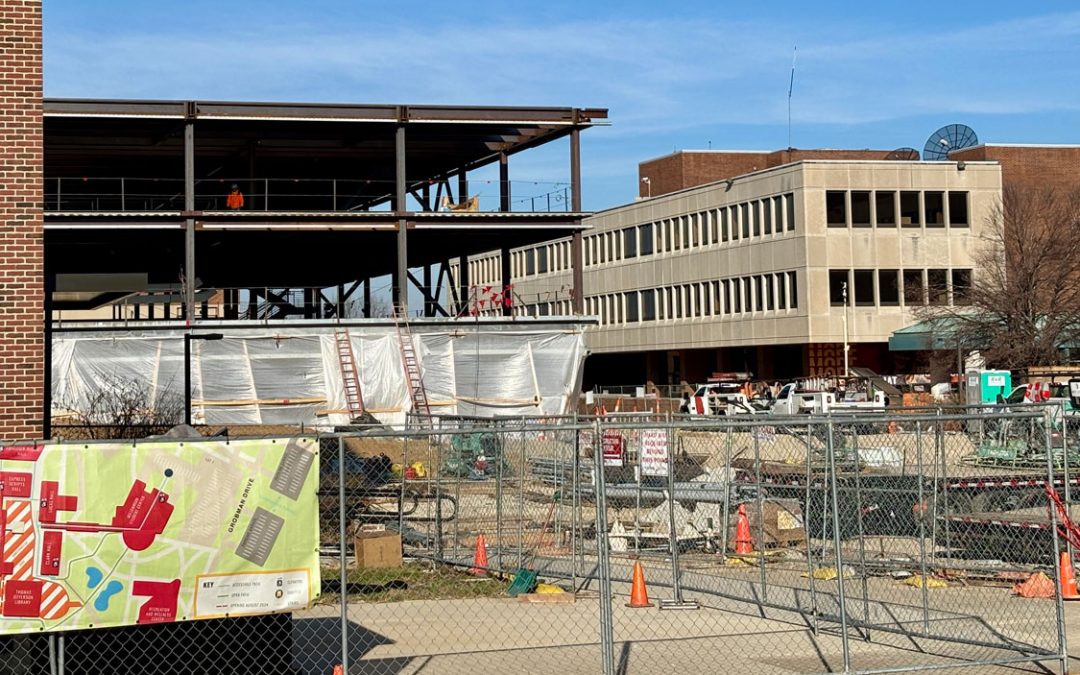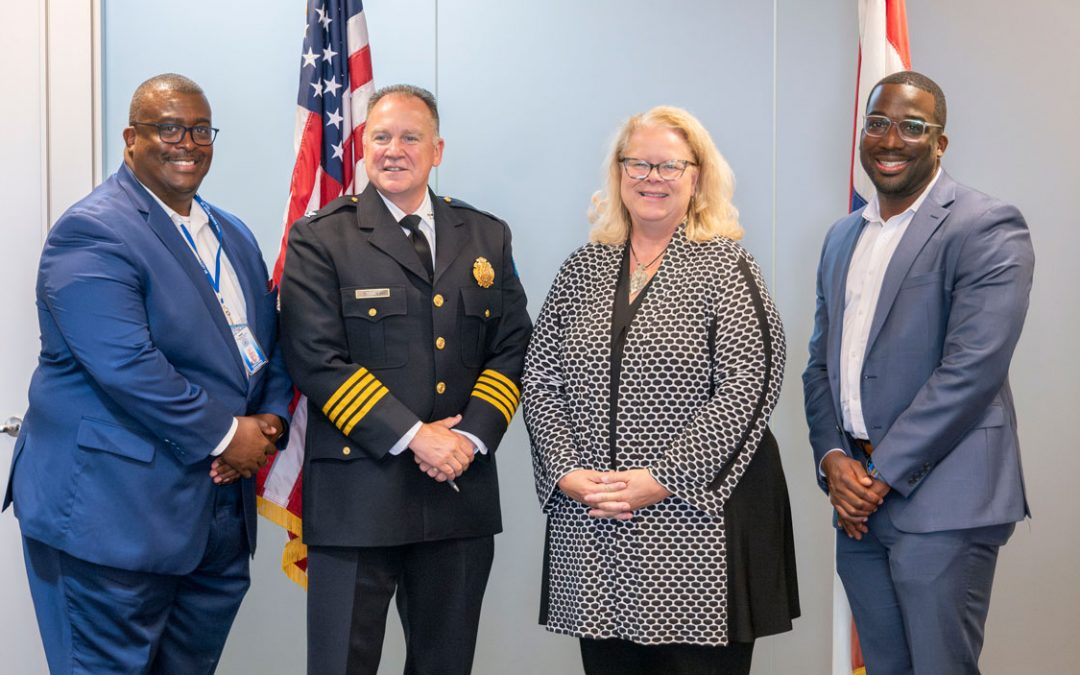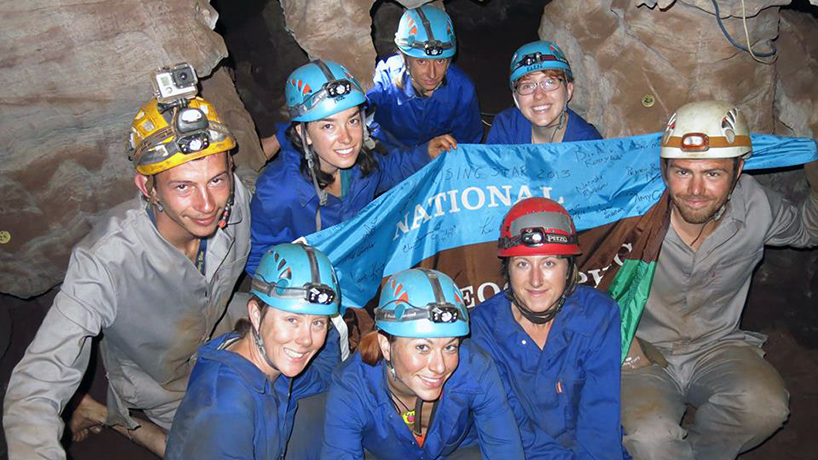
K. Lindsay Hunter (bottom center) was one the six “Underground Astronauts” on the Dinaldi Chamber expedition. (Photos courtesy of K. Lindsay Hunter)
Up late writing to meet a deadline, K. Lindsay Hunter was likely one of the first people to see phenom paleoanthropologist Lee Berger’s 2013 call for individuals with archeological or paleontological experience.
It caught her eye because of:
- Its location on Facebook. Calls for researchers don’t normally come via social media.
- The text, which read, “The person must be skinny and preferably small. They must not be claustrophobic, they must be fit, they should have some caving experience, climbing experience would be a bonus. They must be willing to work in cramped quarters.”
The University of Missouri–St. Louis alumna’s mind flashed to the storied advertisement for the Shackleton Antarctic Expedition, which promised “small wages, bitter cold, long months of complete darkness, constant danger, safe return doubtful” in return for honor and fame if successful.
“That’s only going to appeal to a certain kind of person, of which I am one,” Hunter said, explaining that she’d first sent it to a friend. “It wasn’t until Lee thanked me for re-posting that I started thinking about it more in terms of something that I could actually do.”
What Hunter didn’t know yet was that a short while earlier, two spelunkers in South Africa’s Rising Red Cave system had discovered a chamber strewn with what appeared to be human bones. Two passages, one 17 and the other 30 centimeters, limited who was going to be able to access the site.
Hence Berger’s call for slim scientists.
To reach the chamber she was excavating, Hunter had to maneuver through two slim passages with openings of 17 and 30 centimeters. (Photo by Elen Feurriegel)
The resulting team of six early career female researchers, including Hunter, was an anomaly in the science world and quickly became known as the “Underground Astronauts.” Over the course of two years, the Dinaledi Chamber expedition excavated a 1-meter-square pit, bringing up 1550 fossilized bones that led to the discovery of a new hominin, a Homo sapiens cousin, named Homo naledi.
The astronauts got famous quickly. A slew of news coverage, plus a National Geographic/NOVA documentary, followed the announcement of their find.
The day-to-day of the job was less glamorous, though more satisfying. Berger and his team set up lights, video cameras and guide ropes to help the scientists navigate passages such as the “Superman’s Crawl,” through which Hunter had to creep along with one arm tucked behind her.
“It was mostly confusing to figure out how to wriggle down as gravity didn’t help as much as you would’ve thought,” she said. “The experience was honestly a bit of a blur but, overwhelmingly, what has stuck with me have been the friendships and the stories around the campfires in the evenings.
“It was these moments that really helped me probe what I felt was most important about being human and what I wanted to make of my life moving forward.”
Hunter took those revelations and channeled them into making herself a home in South Africa after the dig.
After marrying Rick Hunter, one of the cavers who had found the site, she enrolled in a PhD program at the University of the Witwatersrand, having previously completed her master’s in anthropology at the University of Iowa.
She also spearheaded a public education and community outreach program for the African Digital Education Trust that became known as the National Geographic “Umsuka” Public Paleoanthropology Project. Its mission is to increase South African peoples’ access to their fossil hominin heritage.
“All of the NatGeo Umsuka programs share a commitment to finding tangible benefits here and now for local communities from learning from our deep hominin past,” she said. “I’m working on extending the Cradle Ambassadors program to other areas of South Africa, and I hope to bring some of the benefits to other countries, as well.
“I think that there is a lot of potential in connecting biological evolution and social transformation, and I want to spend my life changing lives for the better.”
Hunter first became interested in paleoanthropology while studying anthropology and history at UMSL, which she attended alongside her mother, Katherine Eaves, who earned her BSBA in 2000.
As an undergraduate, Hunter was a teacher’s assistant for Pamela Ashmore, then-associate professor and chair of the Department of Languages and Cultures. She became Hunter’s mentor and eventually the model for her work in South Africa.
“She was everything I wanted to be as a professor,” Hunter said. “I am so grateful for the time that I spent at UMSL and for what I learned. I don’t think I could’ve learned more about myself and the world anywhere else.”

